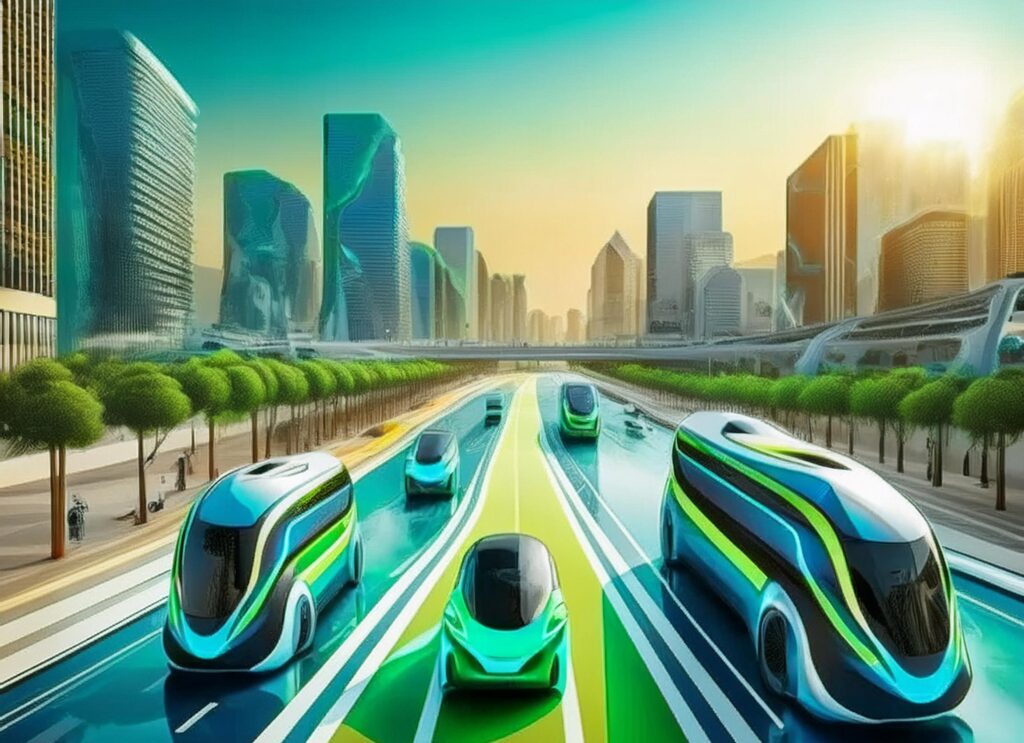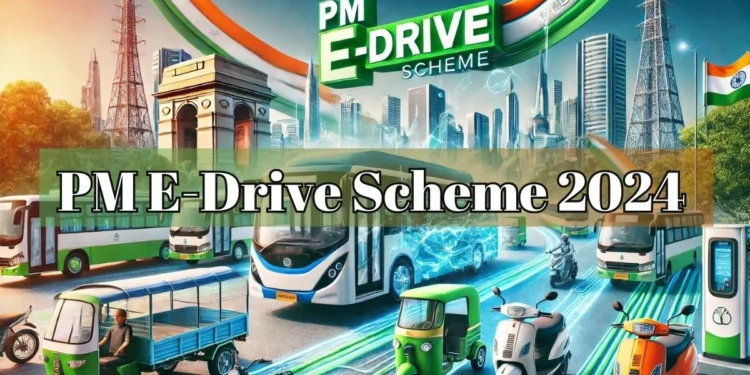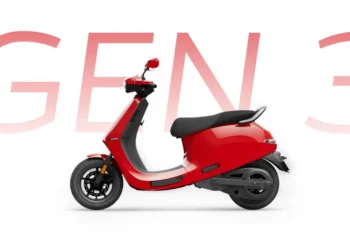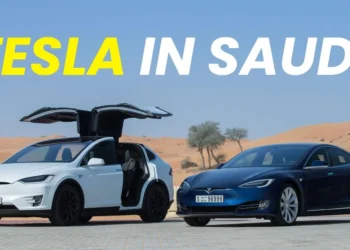The PM E-Drive Scheme 2024 marks a significant milestone in India’s journey toward greener transportation. This new initiative, replacing the previous FAME II program, is designed to accelerate the adoption of electric two-wheelers and three-wheelers. With an impressive budget of Rs 10,900 crore, the scheme aims to make electric vehicles (EVs) more accessible, affordable, and appealing to a wider audience. You can get more information from PM India‘s official site.
Table of Contents
What is the PM E-Drive Scheme?

The PM E-Drive Scheme is a groundbreaking government initiative to boost the adoption of electric two-wheelers and three-wheelers across India. Set to replace the earlier FAME II program, this scheme allocates Rs 10,900 crore to offer financial incentives for these smaller EVs. The focus on two-wheelers and three-wheelers reflects the scheme’s goal of making electric transportation more practical and attractive to a broad spectrum of consumers.
Key Objectives of the PM E-Drive Scheme
The PM E-Drive Scheme is designed to achieve several key goals:
- Affordability: By offering significant financial incentives, the scheme aims to lower the purchase cost of electric two-wheelers and three-wheelers, making them more affordable for consumers.
- Local Manufacturing and Jobs: The initiative is expected to stimulate local manufacturing and create job opportunities within the electric vehicle sector.
- EV Infrastructure and Technology: The scheme supports the development of EV infrastructure and technology, promoting cleaner, more sustainable transportation options and reducing carbon emissions across the country.
Financial Support and Incentives For PM E-Drive Scheme
With a budget of ₹10,900 crore, the PM E-Drive Scheme represents a major investment in India’s electric vehicle market. This funding will provide direct benefits, such as subsidies for consumers purchasing electric two-wheelers and three-wheelers and incentives for manufacturers to boost production. Compared to the previous FAME II scheme, this allocation is tailored to address the specific needs and potential of these vehicle categories.
Eligibility Criteria and Benefits For PM E-Drive Scheme
The PM E-Drive Scheme targets electric two-wheelers and three-wheelers exclusively. Eligible vehicles will benefit from reduced purchase costs and financial incentives for manufacturers. These measures aim to make electric vehicles more appealing and accelerate their adoption, contributing to the scheme’s broader environmental goals.
Implementation and Administration
Various government agencies will oversee the implementation of the PM E-Drive Scheme. These agencies will manage the distribution of incentives, monitor compliance, and evaluate the scheme’s impact. The rollout will follow a clear timeline with key milestones to ensure effective deployment and management.
Potential Challenges and Criticisms
While the PM E-Drive Scheme aims to drive progress in electric mobility, it may face some challenges:
- Infrastructure Development: Extensive development of EV infrastructure is necessary to support the growth of the electric vehicle market.
- Exclusion of Electric Cars: The scheme’s focus on two-wheelers and three-wheelers might limit its overall impact. Electric cars could contribute significantly to reducing urban pollution and achieving climate goals. Including them in the scheme could lead to a more comprehensive strategy for promoting clean transportation.
Prospects and impact of PM e-drive scheme
Looking forward, the PM E-Drive Scheme is set to play a crucial role in advancing India’s transition to cleaner transportation. By concentrating on two-wheelers and three-wheelers, the scheme aims to reduce emissions and support sustainable mobility. Its success could pave the way for future initiatives that broaden the scope of electric vehicle adoption.
What expert Says:
Indian auto manufacturers have shown enthusiastic support for the PM E-Drive initiative to promote electric vehicles, highlighting its potential to advance sustainable transportation.
Ola CEO Bhavish Aggarwal and Anish Shah – Group CEO of the Mahindra Group and Managing Director of Mahindra & Mahindra also welcome this government initiative.
Conclusion
The PM E-Drive Scheme 2024 represents a significant step towards enhancing the electric vehicle market in India. By focusing on two-wheelers and three-wheelers, this initiative aims to create a major impact on reducing emissions and promoting sustainable transportation. As the scheme progresses, it will be important to monitor its effectiveness and impact on the market.
Stay updated on developments related to the PM E-Drive Scheme and explore the range of electric vehicle options available. Engaging with this initiative can contribute to India’s green mobility revolution.
To know How Can You Charge Your Electric Car Superfast 2024? Click Here.
FAQs
1. What is the PM E-Drive Scheme 2024?
The PM E-Drive Scheme 2024 is a new initiative aimed at increasing the adoption of electric two-wheelers and three-wheelers in India. With Rs 10,900 crore allocated, it replaces the FAME II program and offers financial incentives to make these vehicles more affordable.
2. What are the goals of the PM E-Drive Scheme?
The scheme aims to:
1. Lower the cost of electric two-wheelers and three-wheelers.
2. Boost local manufacturing and create jobs.
3. Improve EV infrastructure and technology for cleaner transportation.
3. How much funding is available under the PM E-Drive Scheme?
The scheme has a budget of ₹10,900 crore, which will be used for consumer subsidies and manufacturer incentives to increase the production and adoption of electric two-wheelers and three-wheelers.
4. Who can benefit from the PM E-Drive Scheme?
The scheme is designed for buyers of electric two-wheelers and three-wheelers, as well as manufacturers. It provides financial benefits to reduce vehicle costs and encourage production.
5. What future impact is expected from the PM E-Drive Scheme?
The scheme is expected to advance India’s shift to cleaner transportation by making electric two-wheelers and three-wheelers more prevalent, potentially influencing future electric vehicle policies.







